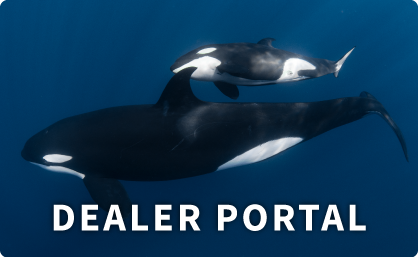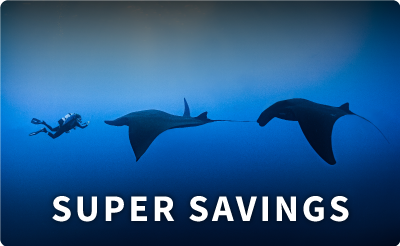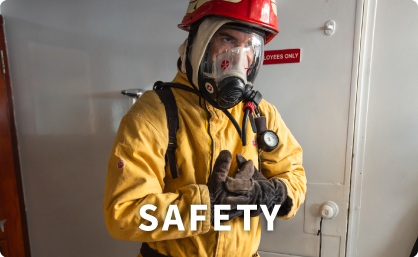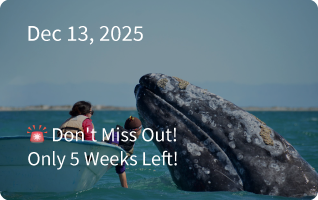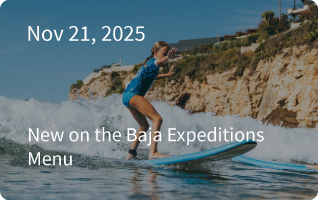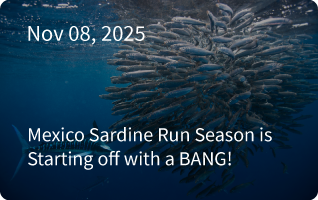So now about the diving. I won’t bother trying to name all the dive sites as some of them had no name until we named them after being the first divers to dive them from the Nautilus. Our dives would start in the main living area of the cabin where our Captain, Mike Lever would give us a very detailed dive briefing. He would sketch the site on the board on the wall detailing the above and below water topography, depths, dive skiff location, currents, hazards as well as what and where to look for the resident inhabitants that they may have seen in previous trips. It was the first of what would be many briefings at many dive sites over the coming days. Our first briefing was a little longer as he went over what he expected from us as we traveled on the skiff too and from the dive sites as well as getting on and off the skiff. Safety was the top priority in all of his briefings both for us the customer as well as for himself and his crew. So our first dive would be on a small rock outcropping which they called Staircase. It got it’s name from the underwater topography on the side of the islet. It’s most interesting feature was the current. We dove on the lee side of the small island as the current was running past on both sides. The warning in the dive briefing was “DON’T GET OUT INTO THE CURRENT” as it will sweep you away. The interesting thing about diving there was that you could hear the sound of the water running as you got close to the current. As I indicated previous this was to be a warm up dive and I suspect the site was chosen as there isn’t a lot to run into and wreck so there wasn’t a lot to look at as a result. The crew is all about protecting the life at the sites for those that come after us. Dive number 2 was a short distance away at Walt’s Wall and we did that after a short interval back on the Nautilus. This site was a far better representation of the life that we would be seeing on the coming dives. There was a lot more life on the wall with all the accompanying colors that we are treated to in the waters on our own coast. So after our 2 warm up dives we proceeded further north with Browning Pass to be our next stop.
Okay so back at Browning Wall our first dive was to be Hussar Point. I almost passed on the first dive as I had done the site on a previous trip and I had considered it pretty ho hum. We had done the site as we were looking to get in all the dives we could and it was one of the few in the pass that could be done off slack. On this dive I would be diving with a couple of friends that I had enjoyed diving Browning Pass on previous trips. We were dropped at the edge of a wall that we obviously didn’t see on my previous trip. The wall was full of the nooks and crannies that we have come expect diving in Browning Pass. There was lots of life on the wall itself and it turned out to be a very enjoyable dive. We arrived back on the surface to the excited story of a first time diver to the area. He had never seen an octopus before but had managed to find one on this dive that was enjoying his first meal of the day, a Puget sound king crab. Apparently it was sitting there contently munching on breakfast when they arrived on the scene toward the end of their dive. As they were helping him out of the water the crew was worried that there was something wrong with him. Turned out he was just so excited that he could hardly talk. We missed the octo but we did have a sea lion come and check us out while we were hanging out doing our safety stop. Dive #2 would be Seven Tree Island. It is a dive that I have enjoyed on previous trips to the area and it was nice to see that it is still in as good a shape as I remember it from my last dive there. The plan was to dive from the north end of the island moving with the current to the south. As we came to the canyon on the south end we crossed over to the inside of the island and into the sand flats and eventually arriving back at the north end doing our safety stop in the kelp. In the evening we did a night dive on a site that I don’t remember doing in past trips called Aquarium. We were treated to another fine meal at the end of another day of great diving. Tomorrow would bring a dive at the what is regularly described as the best cold water wall dive in the world, Browning Wall. I got up early and started my day watching a sail boat travel past us in the distance. Other than that small boat there was nobody around but the folks on the Nautilus. Around 7 am. the others started coming up to check out the day. Another big breakfast and then back to diving. Browning Wall was just as I remembered it, completely covered in life of all shapes and colors. Video was on the agenda for today and the plan included trying to get some video of the grunt sculpin that lives on a part of the wall that we had found on previous trips. A short time into the dive we came to the spot where we found the little guy still hiding in his usual haunt. He wasn’t interested in being filmed unfortunately and fled at the prospect. He managed to find a spot small enough that the video camera couldn’t get in to film so there will be no sculpin video from this trip. The weather has apparently improved to the north so we will be on the move to dive Dillon Rock in the afternoon. We are told that the site is famous for Wolf eels and octopus.
So now a little more about how the dives are organized. We arrive at the dive site complete with the knowledge of the site from our briefing. At the site the waters are checked for current and we would be anchored adjacent to the dive site. When it was decided that the current conditions were good we would be told how many minutes we had before we had to be back on the boat. The dives were usually no shorter than 50 minutes and generally no longer than 60 minutes. When the crew was satisfied that everything was in order we would be told “The pool is open” and we were off. There was always at least one dive master in the water to show anyone around that may have wanted a guided tour or to dive with anyone that didn’t have a buddy for whatever reason. The boat would remain at the anchor for some time before tying a float to the anchor line leaving the anchor in place for those odd times when you might be able to return to the anchor and ascend up the anchor line. As our dives came to an end we were to follow the topography up to the surface wherever possible. Once on the surface it was requested that we stay close to the shore so we wouldn’t get out into the channel and washed away by the currents. The skiff has a third outboard on it that is a jet drive and they use that for power when retrieving divers out of the water. The jet drive is nice as it will run in very shallow water and there is no prop to have to stay away from. Once everyone is back on the skiff the captain would call down from above asking if there were any special drink requests for the crew back at the Nautilus. When we arrived back the crew would be waiting with hot drinks, fresh made cookies and hot water to dip your hands in to warm up after the dive. A short walk up from the stern was a hot shower where you could rinse your suit off before getting out of it. A dryer was adjacent to the cabin door where you could throw your damp undergarments in to dry for the next dive.
I will finish this off with little more about the diving not because the diving wasn’t great but because this is getting way too long. After Dillon Rock we moved around the top end of the island overnight and arrived at Quatsino Inlet the next morning. This is the area that the sea otters were relocated after being hunted to extinction many years ago. They seem to be doing fine as they could be seen swimming around in the kelp a short distance from our anchorage. We attempted to dive with them but that is when we found out why they are described as shy. Put divers on a boat and take them out to dive with the sea otters and they simply disappeared until we were all back on the boat after our revised dive. On this side of the island pinnacles are the dive of choice. Most of the pinnacles came to within 15 feet of the surface and were easy to spot from the boat because of the plumes of water that would come up when the occasional wave hit them. The dives generally had little or no current but that was replaced by surge. The water on the outside of the island was described as glass calm which meant that we had 4-5 ft. swells at all times. Those swells didn’t look like much on the surface but when you got down on the pinnacles you could feel them at 70 ft. and they got stronger the closer you got to the surface. As we traveled along the outside of the island we were treated to regular visits by the humpback and grey whales returning north from the warmer waters where they wintered in the south. In some cases they would surface 50 ft. from the boat. If whales were close the boat would stop until they passed us by. Along with the whales we had sea lions, seals and a myriad of birds and other animals to watch as we traveled along. Usually at dark most would head off to bed and would awaken at our next destination. When you came up on deck in the morning we were usually anchored in a secluded area off a passage that we had traveled up during the night. It was not unusual to see bears on the shore close to the boat. There are binoculars located throughout the boat to use to watch the animal life. Another anchorage and more diving. It’s a tough life. At one of our stops we had a bald eagle land on the radar tower and proceed to watch all the folks on the upper deck spend the next half hour taking picture after picture of him. Our trip took us down the west side of Vancouver Island stopping to dive and enjoy points of interest along the way. One of our stops was at Friendly Cove which is the site where Captain Cook came ashore and claimed the area for Britain. We got a bit of a history lesson and learned how the Spanish were actually there first but they didn’t come ashore as the weather was bad. Apparently Britain and Spain came very close to war over who could make a claim on the area. The boat tied up at the dock in the cove and we were able to go to land where some of us found our way to the marker that commemorates Cooks landing. That along with a tour of the abandoned church and beach area was a nice way to finish off the evening. Heading south we stopped in at Bamfield. The captain had asked us if we were interested in a tour of the research station in Bamfield and as many were they called over and organized a tour for us. As we traveled along there were opportunities for shore trips. For those that wanted to pass up a dive the crew would arrange to put folks in at fishing villages or organize light house tours when we were anchored close by. After Bamfield we steamed overnight and when I arrived on the top deck early the morning of our last dive day we were travelling up the Strait of Juan de Fuca. After not seeing much in the way of civilization for the past week it was strange to see an ever increasing number of boats, homes and then towns and eventually the capital of BC, Victoria. For our last 2 dives we were treated to Race Rocks out in the strait and then on to Victoria’s inner harbor where we enjoyed some wandering around the harbor before diving the Ogden Point breakwater. We left Victoria in the late afternoon and enjoyed a leisurely crossing back to Steveston via Active Pass. We had enjoyed a 8 days of spectacular above and below water scenery, excellent food and great company.
Now before I finish this epic novel something has to be said of the crew. We spent 9 nights with a group of people that seemed to have nothing else on their minds other than to do anything to make the trip better. Meg and Monica were everywhere making sure people got whatever food and drink they wanted wherever they wanted it. Sten and Boris were always available for anyone that needed help with their dive gear or any other problems they may have encountered. Wherever we traveled Ted knew the history of the area and the names of the locals that were a part of the areas history. If you wanted to hear about far away lands Sten could provide you with a virtual tour of many parts of the world complete with hilarious stories of his travels. Enrique our chef was amazing in what he would have waiting for us for meals as well as snacks between dives. From the crab feast on the upper deck to the burgers off the barbeque the food was excellent. We had an electrical problem with a video camera which we needed a soldering iron to make the repairs. Enrique happened along at about that time and was interested in what we were working on. After hearing our need for the soldering gun he disappeared and returned a short time later with one that he found below someplace. No tools would have meant no video camera for the rest of the trip. Tim who we didn’t get to see too much of as he was always working below decks making sure everything was running smoothly. Finally last but not least that young hard working Bayu. As with all boats there is never ending painting and cleaning to be done. Bayu would be working away on some project and we would need to get something from our dive gear under where he was trying to work. He would just smile and move his tools out of the way and stop what he was doing until people got whatever they needed before returning to his task.
Mike, you put on a great show, I thank you for the hospitality and I look forward to another adventure on your boat, possibly Alaska or Socorro sometime in the future. Darryl Harris

